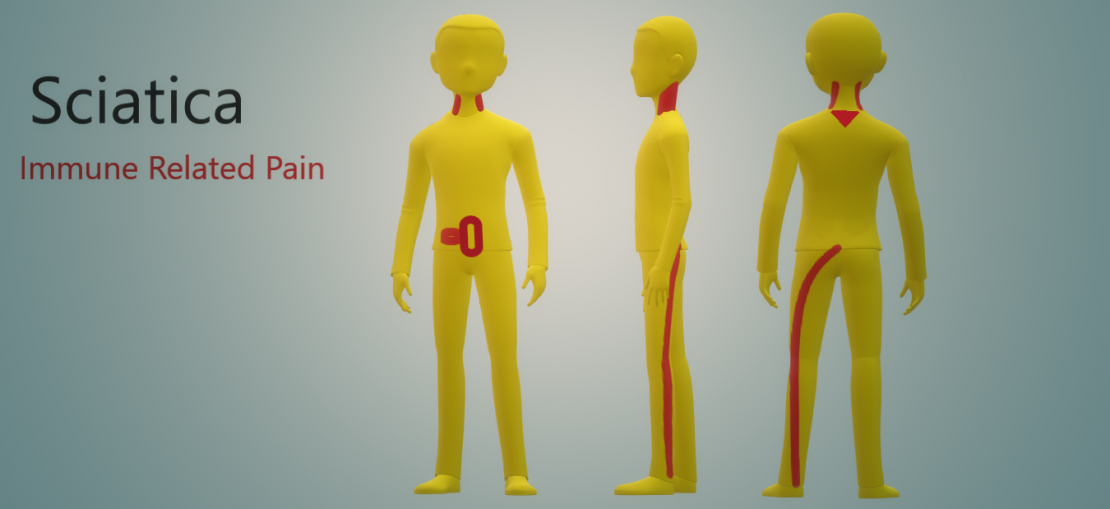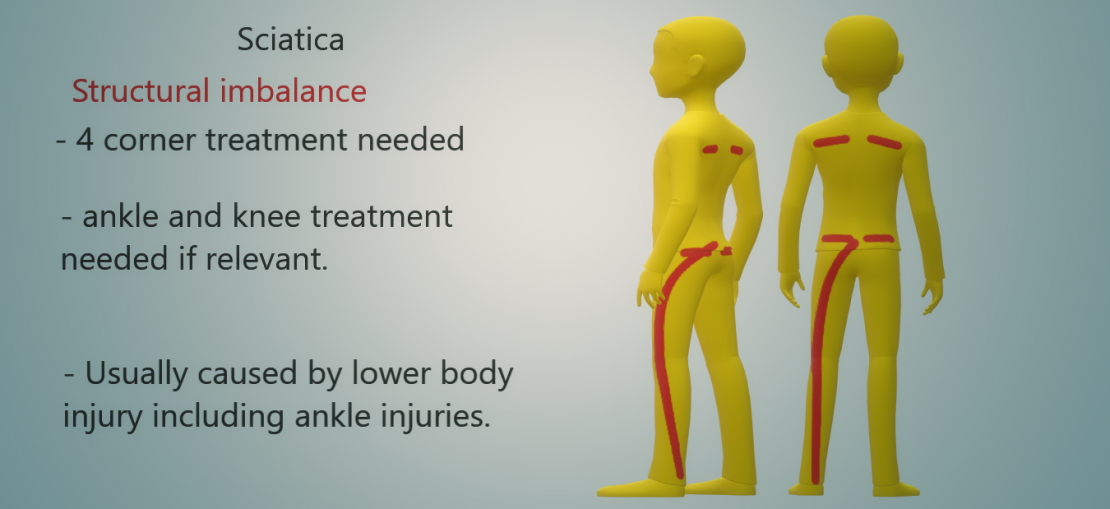Sciatica
The purpose of this page is to address questions concerning Sciatica and provide education on why multiple acupuncture sessions are required for the complete healing of Sciatica.

Sciatica who gets it?
- Whether you’re an office worker who sits in front of a computer screen, a school teacher, an athlete, a person who has good discipline and goes to the gym 3x a week, an expecting mother in her 3rd trimester, a construction worker that spends physical energy all day, or a couch potato - sciatica is a common disease that does not have restrictions to whom it affects. We can all get sciatica and we can get sciatica for different reasons.
Who treats Sciatica:
- For fast relief of an acute or chronic case of sciatica, acupuncture is a great solution that does not rely on pain medication. Acupuncture can provide fast relief from acute and chronic cases of sciatica pain by relaxing the muscles and fascia around your low back and sciatic nerve that are deep within our bodies while also adding the benefit of treating whatever caused the symptom or symptoms of the disease to arise by increasing circulation to whichever body system is causing the disease. (Such as digestive or immune imbalance)
Sciatica which nerve?
- Sciatica is named after the nerve that is affected, the Sciatic nerve.
Sciatica which nerve root?
- The nerve root commonly related to sciatica pain is between L4-L5, however, sciatica nerve root dysfunction can also occur somewhere between L1 - L5.
Can sciatica cause knee and hip pain?
- Yes, as the sciatica nerve runs mostly on the backside of the body, it can also cause pain around the joints of your lower body (hip & knee) and even cause what's known as “Referred Pain” which is pain somewhere close to the original site of pain/ injury/ dysfunction.
Why does Sciatica happen? The cause of sciatica can be caused by different reasons that affect the sciatic nerve.
- It can be caused by trauma/ injury around your low back which causes a spasm to the muscles where the nerve root of the sciatic nerve originates from.
- By Sacral iliac joint dysfunction that was caused by a structural imbalance via an injury in your ankle, knee, or hip.

- By tight fascia (a layer of connective tissue underneath our skin), tight fascia can also cause the muscles that are connected to it to spasm and restrict circulation impeding efficient healing.
- Sciatica can also be caused by tight glute muscles (specifically the piriformis muscle) by sitting for a prolonged period of time. Prolonged sitting for a consistent amount of time can cause the muscle to tighten around the sciatic nerve which runs through that area and down to your leg.
- It could have been caused by weak glute muscles which causes an imbalance with other muscles related to your posture and/or hip.
- By injury to your spine or the spongy disks that sit in between your spine.
- Sciatica could occur around the 3rd trimester of an expecting mother as the weight of the baby carried in the front of the body will stretch the meridian, fascia, and muscle connection forward and down causing connective tissues in the back of the body to tighten, especially the piriformis muscle. (On the 3rd trimester, points on the abdomen, low back, and glutes are not used, remarkably an acupuncturist can use points away from these areas to relieve sciatic pain)

- The same presentation is similar to overweight patients with big bellies suffering from sciatica as the weight of the big belly carried in the front of the body will stretch the meridian, fascia, and muscle connection forward and down causing connective tissues in the back of the body to tighten, especially the piriformis muscle.
- Sciatica could be caused by having a chronic imbalanced immune system.
- Sciatica could also be caused by a dysfunction of the organs inside of your abdomen that is causing problems with metabolism, digestion, and poor circulation.
Are Sciatica and plantar fasciitis related? - In two ways, most likely yes.

1.) If the plantar fasciitis is caused by inflammation of the fascia of your foot from too much walking, running, or improper footwear then the body will subconsciously compensate for the pain in your foot by adjusting where you add the load from the weight of your body in your foot while walking (this will create a different walking pattern) next the new walking pattern will affect the chain of joints connected with your posture such as the ankle, knee, hip, sacroiliac joint (part of your hips), as well as the shoulders. Finally, the result will be an imbalance in your structure/ posture and the muscles around L4-L5 (the path and origin of the sciatic nerve root) will tighten / spasm. The result will most likely result in sciatica pain, tight glute muscles, and even tight shoulders muscles as the fascia and muscles of the hips and shoulders are significantly connected, therefore if the hip joints tighten so will the fascia and muscles of the shoulders on the same side or both. Plantar fasciitis can lead to a variety of joint pains.
2.) A long-term immune imbalance that is related to your sinusitis or chronic ears, nose, and throat infections can cause focal infections that affect and reach the connective tissue in the plantar fascia in your foot. In other words, plantar fasciitis has been known and can be caused by a virus and it’s from the same viruses that have been known to cause the common cold or flu. In this case, treating the immune imbalance would subsequently treat the plantar fasciitis which is causing a structural imbalance and sciatic pain.
Why Sciatica won’t go away?

- If wasn’t caused by physical structural damage to your body then whatever has or is causing the sciatica pain in your body hasn’t healed yet or there is some sort of obstruction that is preventing the body from healing completely. Circulation is the key to healing and some connective tissue related to sciatica pain are deeep and it may be related to another symptom, ache, or injury in your body that has a connection to your sciatica pain which also requires time to heal.
What can I do at home for sciatica:
- Other techniques such as physical therapy, stretching, massage, hut-tubs, hot showers with careful stretching can provide relief – these techniques can and do work, however, it takes a longer period of time. That’s the beauty of acupuncture as it can bring deep circulation to areas of the body quickly creating immediate results and with the addition of other techniques such as physical exercise, massage, stretching, and heat the chances of complete healing of sciatica pain is excellent.
SCIATICA MORE INFORMATION COMING SOON!